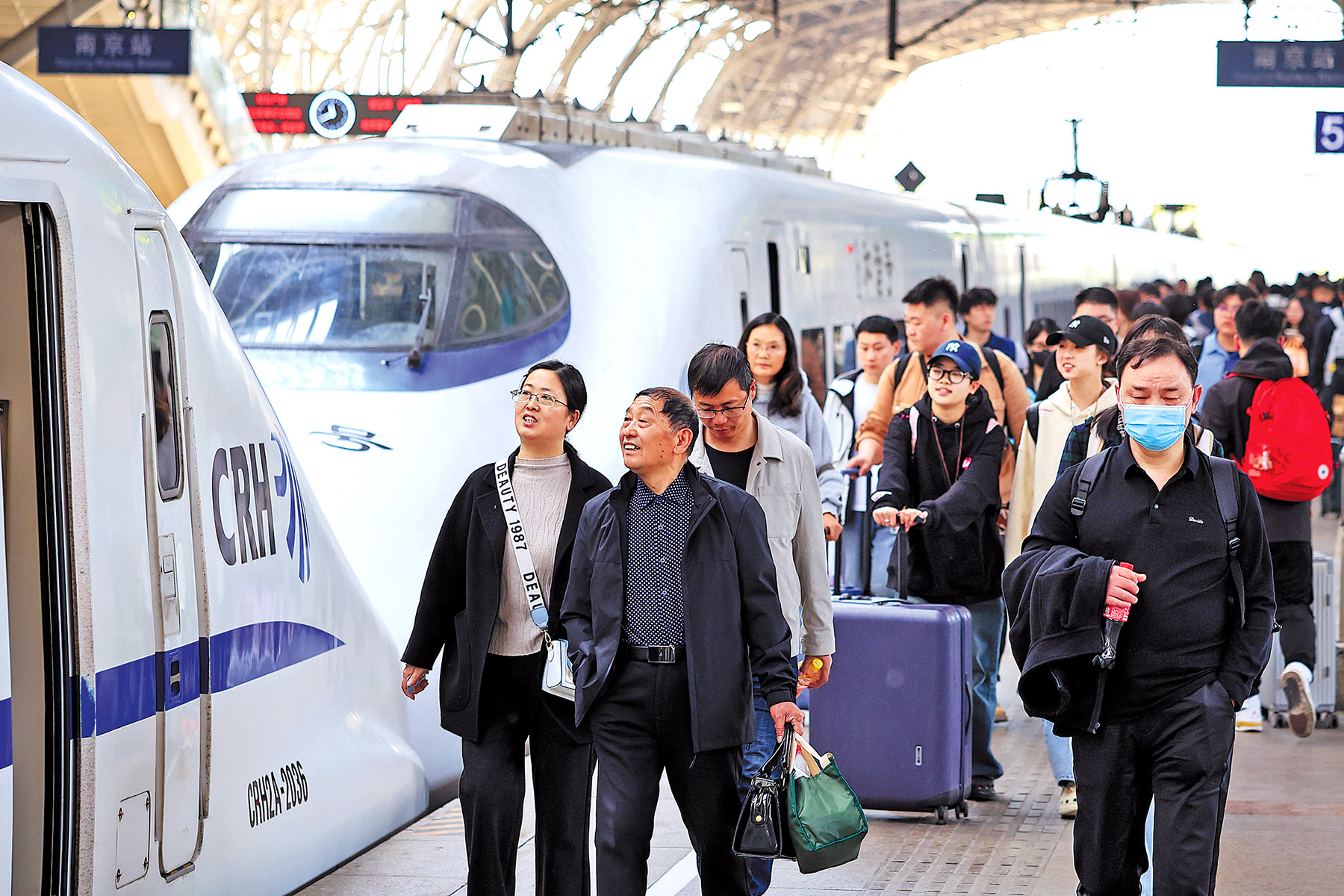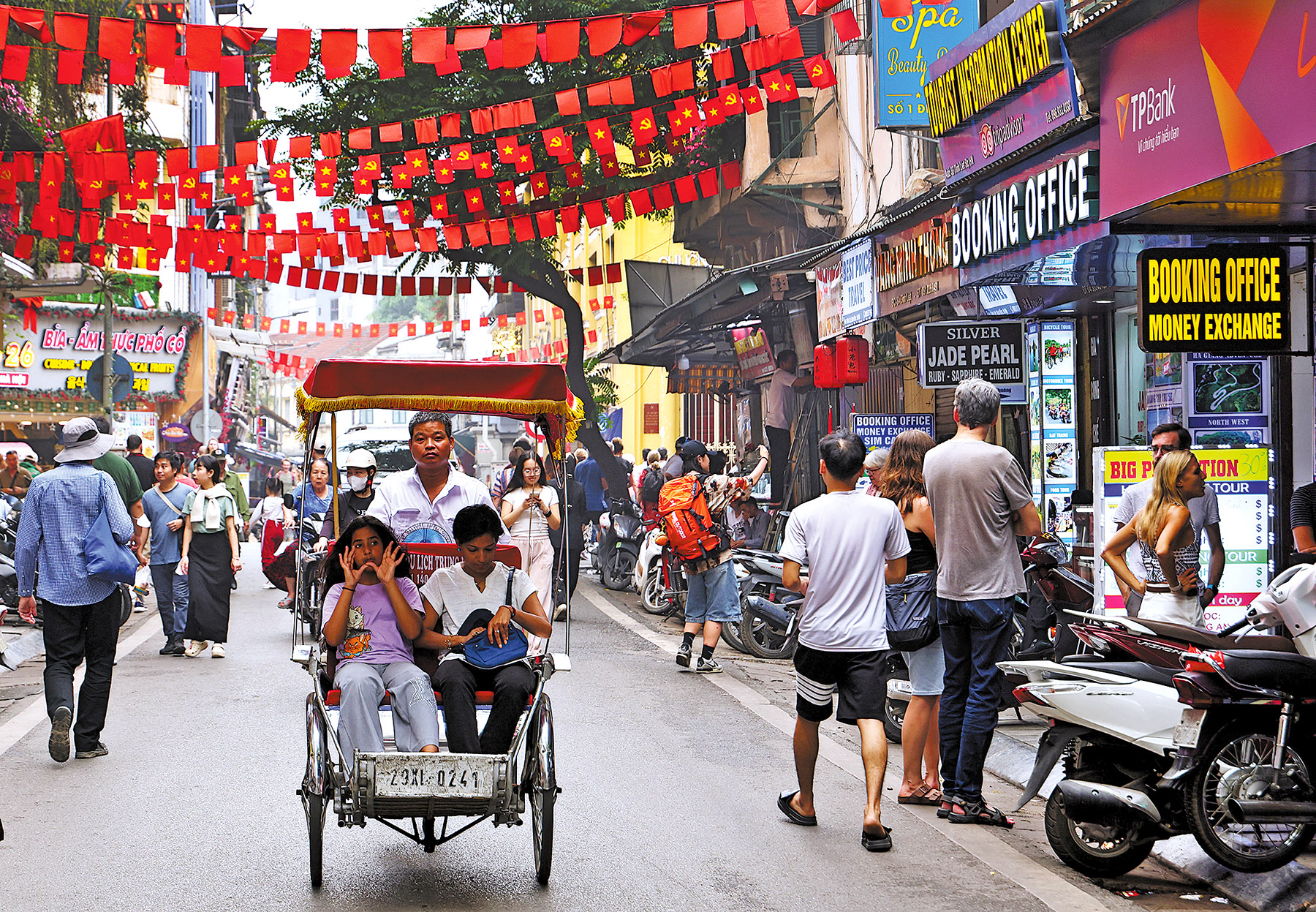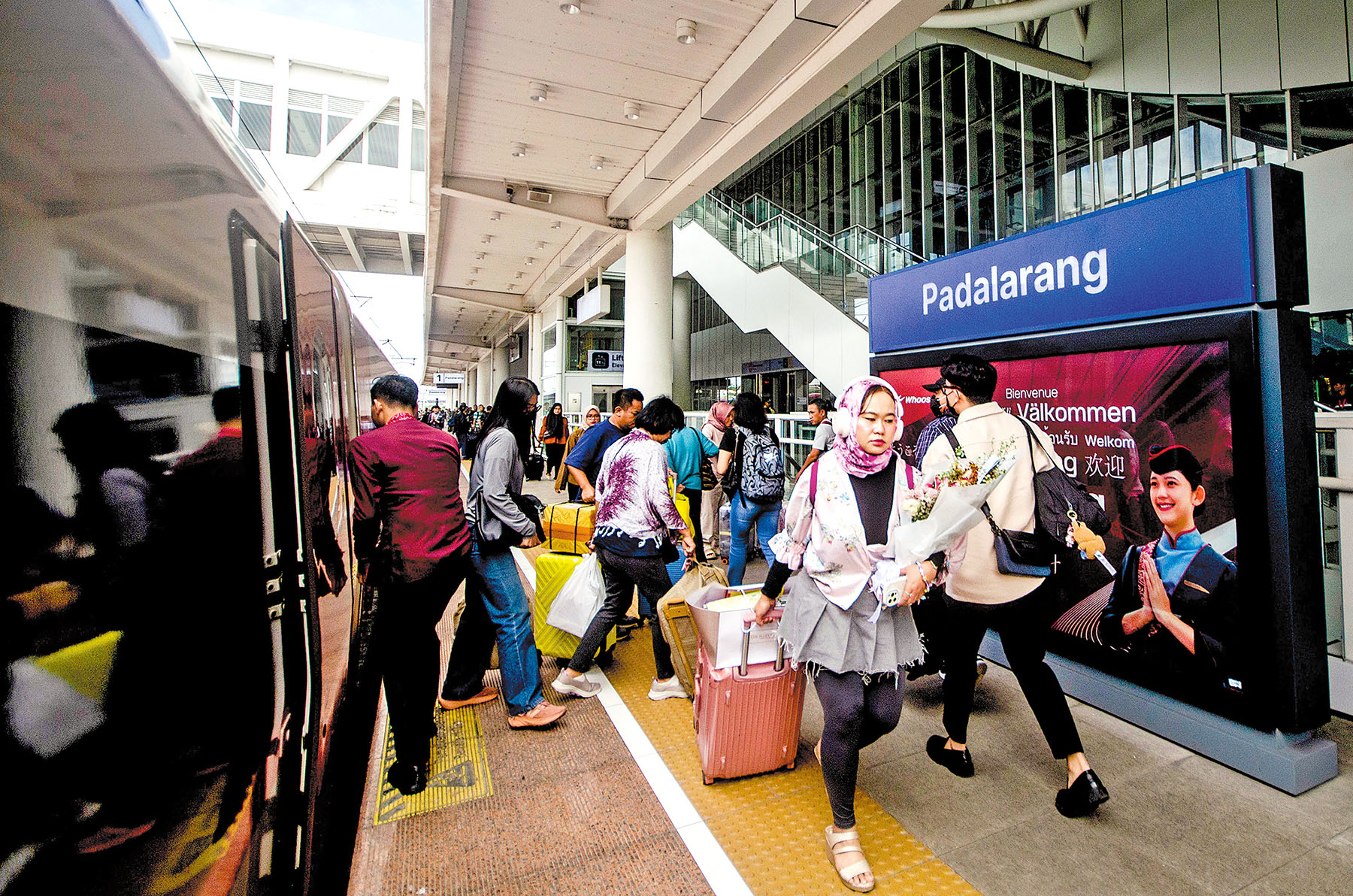Industry’s focus on decarbonization, sustainability is generating a whole new world of travel experiences

As concerns grow about climate change and environmental degradation, the travel industry and governments in Asia are increasingly recognizing the need to reduce the carbon footprint of tourism, a key source of emissions.
Low-carbon tourism has become a buzzword among government authorities and tour operators, as well as a growing number of tourists, as they seek to lessen the negative impact of their travel activities — especially carbon emissions — on the environment.
“The new trend is very important, that we mainstream decarbonization and climate action in every major economic sector, especially tourism,” said Adnan Amin, chief executive officer of the 28th session of the Conference of the Parties to the UN Framework Convention on Climate Change, or COP28.
According to UN Tourism and the International Energy Agency, the tourism sector accounts for about 8 to 11 percent of global greenhouse gas emissions, making it a critical industry in the global push toward net zero.
“Without urgent action, transport-related emissions from tourism could increase by 25 percent by 2030,” Amin said. “Thanks to rapid technological advances, we now have far more tools and solutions to decarbonize tourism. Lower emissions and sustainable travel are no longer a distant goal — it’s achievable. But making real progress requires strong international cooperation.”
Technological progress is already reshaping the sector’s carbon footprint, he said. For example, high-speed rail is proving to be a powerful low-carbon alternative to short-haul air travel.
“Studies show that high-speed rail journeys emit up to 90 percent less carbon dioxide than equivalent flights on the same routes, offering a cleaner and more efficient option for regional connectivity, particularly in countries such as China that are investing heavily in rail infrastructure,” Amin said.
Additionally, the plunging cost of renewable energy — solar photovoltaic panel prices have fallen 88 percent, and onshore wind energy costs by 68 percent, between 2010 and 2023 — is making clean energy adoption more viable for hotels, resorts, and tour operators worldwide.
Amin, who previously served as the founding director-general of the International Renewable Energy Agency, emphasized that sustainability is becoming a decisive factor in tourist decision-making. “More and more travelers are choosing destinations that prioritize sustainability. Given a choice, they will favor those leading on climate action,” he said.
There is also a compelling business case for the industry to act. “For travel companies, embracing sustainability is not just the right thing to do — it’s essential for securing the long-term future of the sector. Lower-carbon tourism is the pathway to resilience and continued growth,” Amin said.
Natalia Bayona, executive director of UN Tourism, said that there is a strong mandate to promote sustainability and create a low-carbon emissions strategy.

According to UN Tourism, an estimated 1.4 billion tourists traveled internationally last year.
“What we need to think about is how … these billions of people that travel all around, become more conscious and respect the environment and the communities more,” Bayona said.
She said there is a strong message from institutions and the public sector to create low-carbon strategies, and there are programs aimed at promoting sustainability.
According to her, it is vital to advance a methodology to measure sustainable tourism, with social impact being a key factor. “This is really important because tourism is the most human economic sector, a human-to-human business (where) we need to measure the real impact on communities,” she said.
William Yu, founder and CEO of World Green Organisation (WGO), a Hong Kong-based NGO, said, “There is a growing global trend toward low-carbon tourism, and the Asia-Pacific region is no exception.”
Pursuing this new trend can bring immense advantages. Environmental benefits apart, there are also economic gains to be made, such as creating new job opportunities, stimulating local economies, and generating more revenue from sustainable tourism.
More importantly, supporting local communities and promoting cultural heritage is another key concept for low-carbon tourism, Yu said.
Amin, CEO of COP28, said the economic potential of sustainable tourism is significant. According to the World Economic Forum, nature-positive tourism could generate $230 billion and create 20 million new jobs annually by 2030, provided it is properly managed.
“China, one of the world’s largest tourism markets, is also seeing growing demand for sustainable travel experiences, creating opportunities for innovation and leadership in low-carbon tourism development,” Amin said.
“Tourism can be a driver of sustainable development and economic opportunity. By aligning with climate goals, the sector can secure its resilience and make a real contribution to the ongoing global energy transition.”
According to Bayona, sustainable tourism, or social impact tourism, also offers a lot of opportunities to help the most vulnerable. “When you respect others, when you respect society, when you respect communities, then you are in a win-win strategy,” she said.

Priantha Fernando, former chairman of the Sri Lanka Tourism Development Authority, or SLTDA, said that low-carbon tourism goes hand in hand with sustainable tourism, and it ensures that natural resources are utilized in a planned manner.
Low-carbon tourism involves protecting tourism, promoting sustainability in the industry, and generating tourism that supports local communities. “China is a classic example. It’s at the forefront of sustainable tourism and reducing carbon emissions,” Fernando said.
He added that many developed economies are adopting similar practices, understanding the importance of decarbonization not only from tourism but also from a national perspective.
Low-carbon tourism could be achieved by ensuring all tourist attractions, facilities, and service providers cut their emissions. In so doing, tourism operators would also cut their costs, increase their profits, and help improve general economic health, he said.
According to Yu from WGO, to achieve low-carbon tourism it is important to reduce energy consumption and carbon emissions, which arise from spheres ranging from transportation to sightseeing activities and accommodation.
“Promoting eco-friendly transportation options, such as electric or hybrid vehicles, is definitively a consideration,” Yu said. “Hopefully, we can see more sustainable accommodation options, such as green hotels and eco-lodges, available in the future.”
The environmental expert advocated practices such as reducing waste and promoting recycling. “Tourists should be encouraged (to show) responsible travel behaviors, such as reducing single-use plastics and respecting the local environments,” he said.
Christine Loh, chief development strategist at the Hong Kong University of Science and Technology’s (HKUST) Institute for the Environment, said the way tourists travel determines a large proportion of their carbon footprint. Flying is a high-carbon mode of traveling.
The US has a large airplane fleet because, she said, there are few options for long-distance travel by train. “However, China has built a large high-speed train system that allows for travel throughout the country by rail — a lower-carbon means of travel.”

The Chinese government encourages rail travel over air travel for shorter distances by reducing or even eliminating flights for shorter distances, Loh said. “Europe also has a good rail system, so there are real options not to fly,” said Loh, who is a former undersecretary for the environment in the Hong Kong SAR government.
Alex Lee Chun-ting, general manager of Miramar Travel in Hong Kong, said his firm is one of the first travel agencies to launch the concept of low-carbon tourism, and promote tours that feature high-speed trains in the Chinese mainland or Rail Europe in the European continent.
Lee noted that railway tourism is a model of green tourism that enables sustainable development. “In the future, we will launch more high-speed rail tours and European railway tour groups to respond to green tourism,” he said.
Loh from HKUST said hotels are another consideration — especially in aspects of energy and water efficiency, and food waste — as well as the destination city’s use of local transport and food waste. Sustainable tourism, shopping, and packaging remain a global issue, as well as the behavior of tourists and how they consume, she said.
According to Yu from the WGO, changing tourists’ behavior and encouraging responsible travel practices is always a challenge.
Bayona from UN Tourism said that there are challenges to changing a society’s mindset.
Fernando, the former chairman of SLTDA, said that the major challenge for countries now is the introduction of a sustainable tourism plan where all stakeholders understand their respective roles and are fully committed to playing their role from an implementation perspective.
Even in a small country such as Sri Lanka, it cannot be handled single-handedly at the national level, he said; it is essential to get all the ministries, departments, and provincial administrations involved.
The SLTDA has initiated the required initial steps with the assistance of the United Nations Development Programme. It is the initial step of a long journey that needs to be pursued with commitment.
“We need to learn through (the) best practices of other countries,” said Fernando. “Surely, we have a lot to learn from countries such as China as we tread forward.”
vivienxu@chinadailyapac.com


